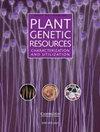哥伦比亚可可基因型的系统发育多样性
IF 0.7
4区 生物学
Q3 PLANT SCIENCES
Plant Genetic Resources: Characterization and Utilization
Pub Date : 2023-02-28
DOI:10.1017/s1479262123000047
引用次数: 0
摘要
可可是一种重要的热带作物,用于生产巧克力。栽培可可和野生可可基因型及其遗传多样性之间的进化关系尚不清楚。探索栽培和作物野生近缘种的系统发育多样性和空间格局,可以提高对作物进化史的认识,为其栽培、育种计划和保护提供见解。本研究利用87个单核苷酸多态性标记计算系统发育多样性指数,确定了哥伦比亚生物多样性优先区。这些基因型来自Corporación columbiana de Investigación Agropecuaria (Agrosavia)种质收集中保存的279个基因型。加勒比和北安第斯山脉地区系统发育多样性最高,相对系统发育多样性显著较高。我们建议将野生可可生长的地区作为优先保护区。此外,在阿劳卡、韦拉和Nariño地区最近出现分化的可可谱系,相对系统发育多样性明显较低,应优先考虑育种计划。亚马逊地区的基因型更接近系统发育树的根部,表明其起源比在安第斯地区发现的更古老。我们的研究强调了利用亚马逊地区的T.可可种质资源作为恢复育种计划中残余多样性和扩大现代栽培可可基因库的重要性。本文章由计算机程序翻译,如有差异,请以英文原文为准。
Phylogenetic diversity of cacao (Theobroma cacao L.) genotypes in Colombia
Theobroma cacao L. (cacao) is an important tropical crop used to produce chocolate. Evolutionary relationships between cultivated and wild cacao genotypes and their genetic diversity are poorly understood. Exploring phylogenetic diversity and spatial patterns of both cultivated and crop wild relatives can improve the knowledge of the evolutionary history of a crop, giving insights into its cultivation, breeding programmes and conservation. This study identifies biodiversity priority areas in Colombia by calculating phylogenetic diversity indices using a set of 87 single nucleotide polymorphism markers. These were sourced from 279 genotypes conserved in the Corporación Colombiana de Investigación Agropecuaria (Agrosavia) germplasm collection. The Caribbean and North Andes areas exhibited the highest phylogenetic diversity and significantly high relative phylogenetic diversity. We propose that those regions where wild cacao occurs should be prioritized as conservation areas. Besides, cacao lineages that have recently diverged and are present in Arauca, Huila and Nariño areas, with significantly low relative phylogenetic diversity, should be prioritized for breeding programmes. The Amazonia genotypes were closer to the root of the phylogenetic tree, suggesting an older origin than those found in the Andes region. Our study highlights the importance of using T. cacao germplasm from the Amazonia region as a priority to recover relict diversity in breeding programmes and broaden the gene pool of modern cultivated cacao.
求助全文
通过发布文献求助,成功后即可免费获取论文全文。
去求助
来源期刊

Plant Genetic Resources: Characterization and Utilization
Agricultural and Biological Sciences-Agronomy and Crop Science
CiteScore
2.80
自引率
0.00%
发文量
29
审稿时长
>12 weeks
期刊介绍:
Plant Genetic Resources is an international journal which provides a forum for describing the application of novel genomic technologies, as well as their integration with established techniques, towards the understanding of the genetic variation captured in both in situ and ex situ collections of crop and non-crop plants; and for the airing of wider issues relevant to plant germplasm conservation and utilisation. We particularly welcome multi-disciplinary approaches that incorporate both a technical and a socio-economic focus. Technical aspects can cover developments in technologies of potential or demonstrated relevance to the analysis of variation and diversity at the phenotypic and genotypic levels.
 求助内容:
求助内容: 应助结果提醒方式:
应助结果提醒方式:


